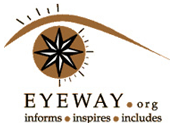It may turn out to be the most revolutionary step in the field of visual disability since Louis Braille’s embossed dots on thick paper in 1829. Divya Drishti, or divine sight, is a high-tech, infrared-based system that helps blind people in spatially orienting themselves, thereby facilitating navigation within closed environs such as offices, railway stations and even malls.
Developed by Pallavi Tiwari and Dhruv Sakalley, final year biomedical engineering students of ‘Shri G.S. Institute of Technology and Science’, Indore, Madhya Pradesh, the system is easy to operate.
The indoor navigating device consists of three portable static transmitter units, sound beacon, arrowhead alignment assembly and a path locating transmitter. The device guides the wearer along a minimum obstruction route via path location and arrowhead receivers fitted on the cap. If a person deviates from the infrared way, it activates the sound beacon.
The cost of the receiver units to be worn by visually impaired person would range between Rupees 350-500/-. Also, the cost involved in preparing a public place operational with the indoor navigation system would also be low. For example, readying an area the size of a typical railway station platform in a major city of India for the device would cost around Rupees 15,000/-.
Both students felt that the navigational system could provide a great deal of travel autonomy to people with visual impairment if it is installed at public places.
Meanwhile, Professor Shafi Patel, Director, Techoz Solution, the firm that provided the necessary technical guidance and fiscal assistance, to Pallavai and Dhruv, to bring their concept to fruition, said that the process of applying for a patent for the navigation system was on. “Once that is through we will look for partners to finance mass production of the device”, he added.
The system bagged the second prize at Technofest-2006 at Indian Institute of Technology, Mumbai.

Facebook comments